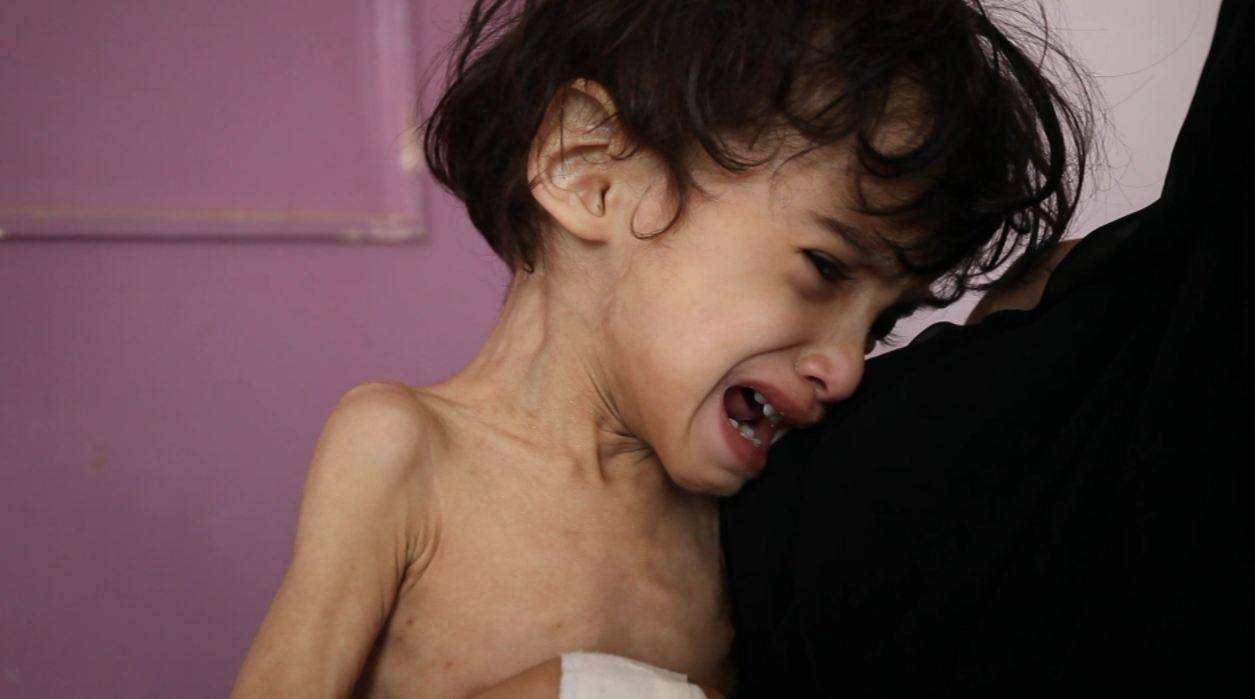Humanitarian Action for Children 2018 – Yemen
Yemen is experiencing one of the world’s largest, most complex humanitarian crises. Almost the entire population—22.2 million people—requires humanitarian assistance.3 Conflict has led to the internal displacement of over 2 million people, left 1.25 million public sector workers without pay for a year, and undermined access to ports and airports, obstructing essential humanitarian and commercial deliveries. In addition, 16 million people lack access to safe water and there are over 1 million suspected cases of acute watery diarrhoea (AWD) and cholera. The outbreak has been exacerbated by the collapse of public systems, which are further strained by fuel shortages. More than 1,100 children have been killed or maimed and millions more are threatened by growing food insecurity, poor water and sanitation and the spread of preventable diseases. The recent spread of diphtheria is another grave concern. Lack of livelihood opportunities has given rise to desperate coping mechanisms, including increased household borrowing and rising rates of child marriage and recruitment of children into armed forces and groups. An estimated 400,000 children under 5 years will suffer from severe acute malnutrition (SAM) in 2018, and the damage or closure of schools and health facilities will threaten children’s development for years to come.
Humanitarian strategy
Humanitarian operations in Yemen are decentralized, with five field offices managing interventions locally. UNICEF works closely with a range of partners and leads the water, sanitation and hygiene (WASH), nutrition and education clusters and the child protection sub-cluster. Given the collapse of public services, UNICEF will increase access to primary health care by providing supplies, covering operational costs, referring maimed children to services, and monitoring/responding to disease outbreaks. Community management of malnutrition will be strengthened, particularly in hard-to-reach areas. WASH interventions will target immediate needs while strengthening long-term resilience by facilitating uninterrupted access to safe water through the rehabilitation of water works and support for sustainable local water system management. Integrated AWD/cholera prevention/response in high-risk areas will encompass WASH, health and Communication for Development interventions, including diarrhoea treatment, water chlorination, waste water system rehabilitation and hygiene awareness. UNICEF will reach the most vulnerable children with protection services, including victim assistance, family tracing/reunification, documentation of child rights violations, mine risk awareness education and psychosocial support. Education interventions will focus on creating safe learning environments, preventing dropout and bringing out-of-school children back to classrooms by rehabilitating damaged schools, establishing temporary safe learning spaces and providing learning/pedagogical kits, psychosocial support and peacebuilding education.
Results from 2017
As of 31 October 2017, UNICEF had US$170.3 million available against the US$339 million appeal (50 per cent funded). This included US$49.3 million for the immediate (first phase) AWD/cholera response, which involved integrated health, nutrition, WASH and Communication for Development interventions. More than 5 million people gained access to safe drinking water,12 9.1 million people benefitted from water treatment, and 17.7 million people participated in awareness and behaviour change activities. UNICEF support for health facilities, which included the provision of supplies and operational support, enabled 2,840 out of 3,083 facilities to stay open in 2017. In addition, some 4.8 million children received polio vaccination, and more than 405,000 pregnant and lactating women accessed health care. Although over 167,300 children with SAM received treatment, the needs continued to outstrip the response. UNICEF was able to verify and document 88 per cent of all child protection cases through the Monitoring and Reporting Mechanism, and provided psychosocial support to more than 404,400 children through child-friendly spaces. Nearly 1.1 million people accessed mine-risk awareness education. Despite the delay to the 2017/18 school year, UNICEF distributed 119,000 school bags, opened safe learning spaces that benefitted 375,000 children and provided psychosocial support to 256,000 students.
Funding requirements
In line with Yemen’s inter-agency Humanitarian Response Plan (HRP), UNICEF is requesting US$337,422,650 to meet the needs of children in 2018. The current requirement is subject to change pending the official release of the 2018 HRP. Given the length of the conflict and the catastrophic breakdown of public services, UNICEF urgently needs funding to support basic health, nutrition, child protection, education, water and sanitation services across Yemen. Without additional funding, UNICEF will be unable to provide lifesaving services; respond to the onset of additional emergencies; and support essential services necessary to improving resilience.

